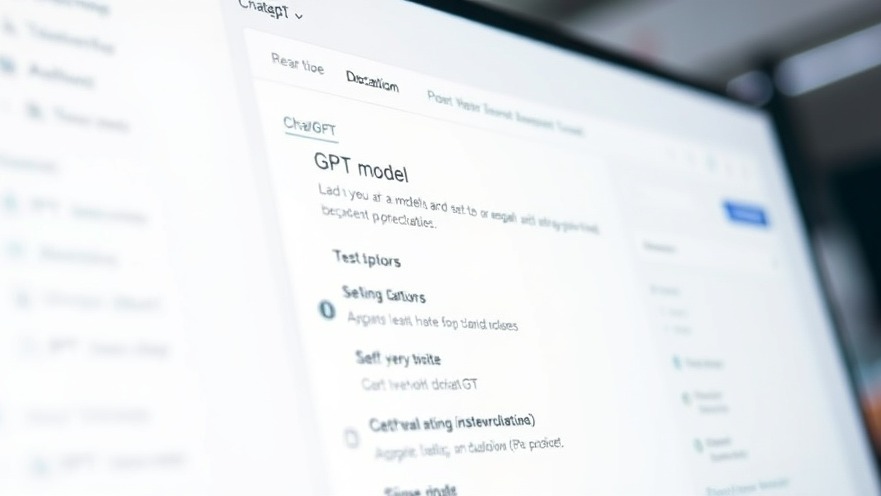
Understanding OpenAI's ChatGPT Model Options
As remote work continues to shape our professional landscape, tools that enhance productivity are invaluable, especially for digital nomads. OpenAI's ChatGPT features multiple models designed for various tasks, each with distinct benefits. Understanding when to use each model can empower users to optimize their workflow effectively.
When to Use GPT-4o: The Everyday Hero
OpenAI recommends using the GPT-4o model for everyday tasks. This AI is particularly proficient at activities like brainstorming ideas, summarizing content, or drafting emails—exactly the kinds of tasks that busy professionals tend to juggle. According to OpenAI, GPT-4o excels in generating action items from meeting notes, creating project-related emails, and proofreading content. The model also stands out for generating plans for new initiatives, especially when supplemented with visuals like sketches or images. It’s the go-to for users who seek functionality in routine operations—a must for those balancing remote work with travel.
Utilizing GPT-4.5 for Emotional Intelligence
Recently introduced, GPT-4.5 offers more nuanced capabilities. It’s tailored for tasks involving emotional intelligence, such as crafting engaging posts for LinkedIn or writing personal notes like apology letters with empathy and clarity. Users can leverage GPT-4.5 for collaborative ideation; think of it as having a brainstorming partner that captures the human touch that technology often lacks. This model shines in instances requiring not just information but also a connection. Although OpenAI's suggestions might initially seem contradictory to those given for GPT-4o, this model's emphasis is on creativity that is both engaging and intuitive.
Harnessing Reasoning Models: O3 for Complex Challenges
OpenAI distinguishes another layer of functionality with its reasoning models, particularly the flagship o3. This model is tailored for intricate or multi-step tasks, making it an excellent choice for crafting detailed market analyses or coding solutions. The step-by-step approach helps ensure thoroughness that can greatly benefit those tackling complex projects—valuable for digital nomads who often face unique challenges in unfamiliar environments. O3 is your problem-solving partner, dissecting issues into manageable parts and guiding users toward comprehensive solutions.
Comparative Overview: Choosing the Right Model
Selecting the right model boils down to understanding the scope of your task. For straightforward tasks like email drafts or content summaries, GPT-4o serves best. For more nuanced communications and creativity, GPT-4.5 is ideal. When faced with complex problem-solving, o3 is the smartest choice. OpenAI’s approach encourages users to select a model based on their specific needs rather than a one-size-fits-all strategy.
Future Trends: What to Expect from AI Tools
The field of AI and productivity is constantly evolving. Future models might incorporate even deeper emotional understanding or streamline complex tasks further. As remote work increasingly embraces AI-driven solutions, digital nomads should stay informed about updates and new capabilities. Being ahead of the curve can lead to more effective, efficient workflows, empowering users to focus on creativity and productivity rather than routine.
Final Thoughts: Make Your AI Work for You
Ultimately, leveraging these different ChatGPT models isn't just about using AI; it's about enhancing your productivity in the diverse and often unpredictable world of remote work. Understanding their unique capabilities can significantly boost your productivity, ensuring you capitalize on every moment, whether you’re in a café in Paris or at home in your office.
As the digital landscape continues to shift, take charge of your productivity journey by testing which models best fit your work requirements. Each interaction with AI is an opportunity to refine your process, allowing you to work smarter, not harder.
 Add Row
Add Row  Add
Add 




Write A Comment